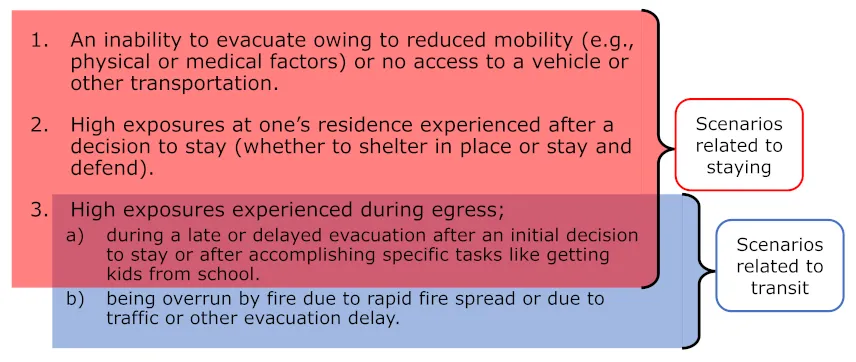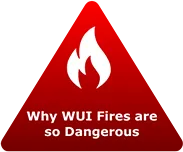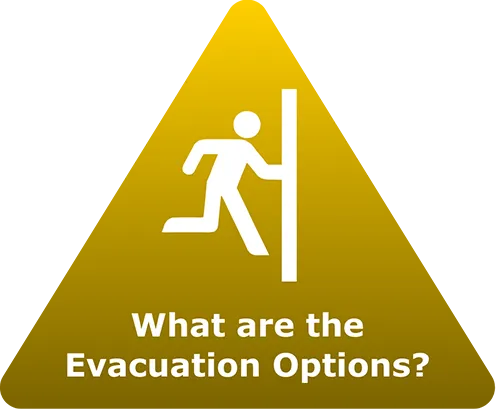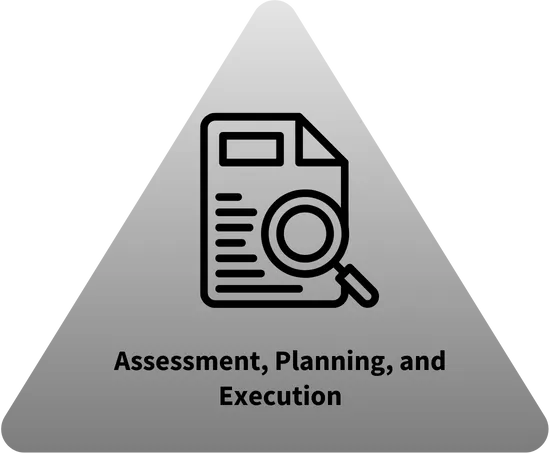
WUI Fire Evacuation and Sheltering Considerations — Assessment Planning and Execution

UNDERSTANDING EVACUATION FAILURES
Evacuation doesn't always go as planned and when it doesn't, lives are at risk. Failures can stem from late warnings, blocked roads, poor visibility, or residents who cannot or choose not to leave. Understanding why evacuations break down is critical to building better, more resilient response plans.
To enhance the life safety of civilians and first responders during rapidly developing WUI fires it is important to identify potential failure modes of evacuations. The use of the term "evacuation failure" is not intended to convey or assign blame, but rather to highlight scenarios that result in undesirable outcomes. Such outcomes may range from non-life threatening consequences to injuries or fatalities.
TYPE 1 FAILURE: UNDESIRABLE EVACUATION CONSEQUENCES
Scenarios that result in community evacuations without any impact of fire on the community or the evacuees. While these evacuations have no impacts to life safety, they may include undesirable economic impacts and other community disturbances and contribute to evacuation fatigue.
When conducted as part of a well-developed and executed evacuation plan, these evacuation events should not be viewed as unnecessary. Communication about why some of these evacuations may have to occur will need to be incorporated into the larger public education campaign for the community evacuation plan and different evacuation scenarios.
TYPE 2 FAILURE: FIRE EFFECTS ON EVACUATION THAT IMPACT LIFE SAFETY
Scenarios in which people experience high fire exposures at their residences or during evacuation.
CAMP FIRE EXAMPLE: ENTRAPMENT DURING EVACUATIONS FROM THE FIRE AREA

Credit: CAL FIRE (left), USFS (right)
The Camp Fire presents multiple examples of civilians becoming entrapped during their attempted evacuations from the fire. These two photos show areas where vehicles were abandoned in the roadway when evacuees were covercome by fire during their escape from the initial fire impact in eastern Paradise. TRAs were formed to enhance life safety in both cases pictured, A) on Bille Road, and B) on Pearson Road.
CONDITIONS THAT CONTRIBUTE TO INCIDENT-LEVEL EVACUATION CHALLENGES
- Fire ignition near community resulting in only a short time to safely evacuate
- Spot fires ignite ahead of the main fire, blocking evacuation and potentially expanding the evacuation area
- One or more evacuation routes close or are obstructed due to fire, debris, or traffic
- Not all of the planned evacuation routes are available (e.g.,construction), resulting in prolonged evacuations beyond the anticipated duration
- Other fires (or other events) in the area impacting regional traffic patterns
- A community is forced into a total evacuation versus a planned partial/zoned evacuation
SYSTEMIC SHORTCOMINGS THAT NEGATIVELY IMPACT EVACUATIONS
- Inability to effectively communicate evacuation orders to residents in a timely fashion, delaying the start of evacuations
- Underestimation of the fire spread rate, resulting in fire arrival at community sooner than anticipated
- Underestimation of the time needed to communicate evacuation orders to the public (including time for interagency communication and decision-making, issuance of emergency notifications, and receipt by the public)
- Underestimation of the time required to evacuate community or part of community
- Underestimation of the impact of fire on egress arteries

SITUATIONS WHEN CIVILIANS EXPERIENCE HIGH EXPOSURES
Civilians can experience high exposures while at their residence or on their way to safety. Several scenarios can contribute to these events, including:




